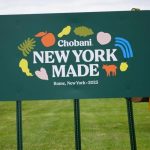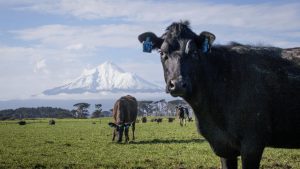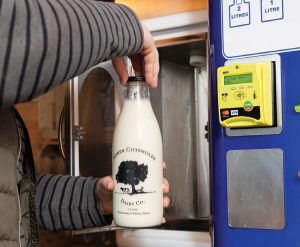
Butter is back in favour, as is whole milk, Fonterra global ingredients president says.
Dairy is back in vogue among consumers after years of people avoiding products like butter and milk for fear of its saturated fat content.
Science has proven that it might have neutral or positive effects on cardiovascular health, Fonterra global ingredients president Richard Allen said, at an event at Fonterra’s office in Auckland that showcased its ingredients and foodservice products.
“We are seeing butter back and whole milk fluid sales in the United States – this is retailers buying milk – for the first time since 2008, they have now increased.
“Now they are associating milk with not only healthy protein but healthy fat and all of the complete nutrition that comes with it.”
Natural food is very much on the way back, he said.
“Grass fed in the States, it would probably be the fastest growing claim in the fresh category because consumers don’t want barn-raised milk.”
A good portion of its US-based protein customers will claim “gras -fed from NZ” milk on their packaging.
“As a seller, that’s a dream.”

Fonterra’s ingredients business is also capitalising on the popularity of protein among consumers, especially in the US.
“It often gets referred to as ‘Oh, it’s just commodities, there’s no value add’.
“Yes there’s a portion of our portfolio that could be 100% classified as commodities, but there’s a significant portion of our portfolio that could be called advanced ingredients which add considerable value on top of a very strong milk price.”
It is not unusual for these products’ margins to be earning upwards of 15-20%.
It is a significant business, bringing in $16 billion in revenue annually, selling to over 1000 customer in over 100 markets. It represents 80% of the co-operative’s milk solids and generated $1.96bn in profit in the 2024 financial year.
For farmers, the ingredients business hugely influences the milk price they are paid and also contributes around 65% of its dividend.
Not all dairy protein is created equal, and taste is often the differentiator between a cheap protein bar and one that uses Fonterra products, Allen said.
These products are not just for the sports market but also in medical food and nutrition production, where Fonterra was a supplier for some of the world’s largest companies.
It is why Fonterra had invested $75 million into its Studholme site to increase its ability to produce advanced protein.
“Studholme was a whole milk powder dryer. Us taking an existing WMP dryer and upgrading it to advanced protein dryer, that allows us to sell ingredients at a higher margin.
“It also means we’re selling less WMP, which tensions the WMP price and improves the farmgate milk price for our farmers and the earnings they get on top.”
The explosion of popularity of protein has been amplified by the popularity of weight loss drug Ozempic and cleaner, simpler labelling on food products.
“It’s no longer about increasing the grams of protein per serving. Now it’s about not all protein is created equal – what is the digestibility, what is the nutritional profile and if you’re buying a processed food, what else is in there?”
You can now read the most important #news on #eDairyNews #Whatsapp channels!!!
🇺🇸 eDairy News INGLÊS: https://whatsapp.com/channel/0029VaKsjzGDTkJyIN6hcP1K
























